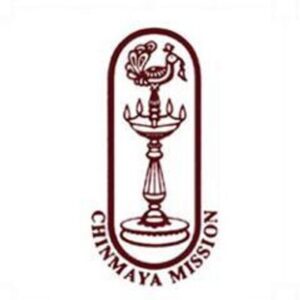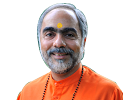Chinmaya Mission – Who we are
Chinmaya Mission® was established in India in 1953 by devotees of the world-renowned Vedanta teacher, His Holiness Swami Chinmayananda. Guided by his vision, devotees all around the world formed the nucleus of a spiritual renaissance movement that now encompasses a wide range of spiritual, educational, and charitable activities, ennobling the lives of thousands across India and beyond its borders. Headed by His Holiness Swami Swaroopananda, the Mission is presently administered by Central Chinmaya Mission Trust (CCMT) in Mumbai, India. Under his guidance, the Mission has continued to grow across the globe and stands today with over 300 centers worldwide.
Chinmaya Mission follows the Vedic teacher-student tradition (guru-shishya parampara) and makes available the ageless wisdom of Advaita Vedanta, the knowledge of universal oneness–providing the tools to realize the wisdom in one’s life. Vedanta, the essential core of Hinduism, is the universal science of life, relevant to people of all backgrounds and faiths. Vedanta inspires seekers to understand their own faith better. Thus, although Chinmaya Mission is a Hindu organization, it does not seek to convert other religious practitioners. As a spiritual movement that aims for inner growth at individual and collective levels, the mission offers a wide array of Vedanta study forums for all ages, promotes Indian classical art forms, and operates numerous social service projects. To date, millions worldwide have benefitted directly or indirectly from Chinmaya Mission’s various centers, retreats, spiritual camps, weekly classes, study groups, public talks, special events, community services, and social projects.
Our Symbol: The Oil Lamp
 Chinmaya Mission’s emblem comprises the lamp of knowledge with the hamsa bird of wisdom at its crown, denoting the Mission’s spiritual and social services to the world. The purpose of the Mission’s Vedantic teachings is to help seekers learn ethical values and cultivate a discerning power – understanding the art of distinguishing the changeless, infinite Substratum from the changing, finite world.
Chinmaya Mission’s emblem comprises the lamp of knowledge with the hamsa bird of wisdom at its crown, denoting the Mission’s spiritual and social services to the world. The purpose of the Mission’s Vedantic teachings is to help seekers learn ethical values and cultivate a discerning power – understanding the art of distinguishing the changeless, infinite Substratum from the changing, finite world.
The oil lamp symbolizes the ethical life needed to light the flame of Knowledge within. The Lord is the “Knowledge Principle” (Chaitanya) who is the source, the enlivener and the illuminator of all knowledge. Hence light is worshipped as the Lord himself. Knowledge removes ignorance just as light removes darkness.
A single lamp can light hundreds of others, just as a single realized master can enlighten thousands. Despite sharing its light with other lamps, the original lamp loses none of its brilliance. In the same way, sharing knowledge will not result in the loss of that knowledge; on the contrary, upon giving knowledge, we begin to understand it more clearly.
In the light of knowledge and wisdom, the faculty of discrimination stands out in clarity, represented by the Hamsa bird. Just as this bird has the proverbial ability to separate milk from water, a spiritual seeker is able to discern truth from falsehood, good from bad, profound from superficial, and permanent reality from the impermanent world.
Vedanta
 The core of the Hindu religion is its philosophy of Vedanta.Just as physics, chemistry, and biology are sciences of the objective world, Vedanta is science of the subjective world. It is the science of life. It provides answers to questions such as What is the goal of life? How should one live life so as to achieve that goal? What is God? What is man? And what is the relationship between God and man? The principal forums through which Chinmaya Mission disseminates this man-making knowledge of Vedanta are Jnana Yajnas and Spiritual Camps.
The core of the Hindu religion is its philosophy of Vedanta.Just as physics, chemistry, and biology are sciences of the objective world, Vedanta is science of the subjective world. It is the science of life. It provides answers to questions such as What is the goal of life? How should one live life so as to achieve that goal? What is God? What is man? And what is the relationship between God and man? The principal forums through which Chinmaya Mission disseminates this man-making knowledge of Vedanta are Jnana Yajnas and Spiritual Camps.
In a traditional Vedic yajna, the ritual calls for the invocation of Fire and other deities in a sacrificial trough. As devotees single-pointedly offer oblations into the trough, they chant Sanskrit mantras and hymns of praise for blessings and protection. It is from the image of this ritual that Swami Chinmayananda coined the term, ‘Jnana Yajna.’ Here, the spirit of sacrifice and cooperation are retained, but instead of offering grains and herbs in a physical fire, ignorance and negative tendencies are sacrificed in the fire of Vedanta knowledge. Jnana Yajna is also a term used by Lord Krishna in the Bhagavad Gita to refer to the study of scriptural texts by students as a ritual of worship at the altar of Knowledge.
– Swami Chinmayananda
Vision & Mission
Mission Motto
To give maximum happiness to the maximum number for the maximum time is our religion.
Mission Statement
To provide to individuals from any background, the wisdom of Vedanta and the practical means for spiritual growth and happiness, enabling them to become positive contributors to society.
Vision Statement
The inner transformation of individuals through knowledge of Vedanta, spiritual practices and service to society, resulting in a happy world around them.
CHINMAYA MISSION PLEDGE
We stand as one family, bound to each other with love and respect.
We serve as an army, courageous and disciplined, ever ready to fight against all low tendencies and false values, within and without us.
We live honestly the noble life of sacrifice and service, producing more than what we consume and giving more than what we take. We seek the Lord’s grace to keep us on the path of virtue, courage, and wisdom.
May thy grace and blessings flow through us to the world around us.
We believe that the service of our country is the service of the Lord of Lords, and devotion to the people is devotion to the supreme Self.
We know our responsibilities.
Give us the ability and courage to fulfill them.
Om Tat Sat.



